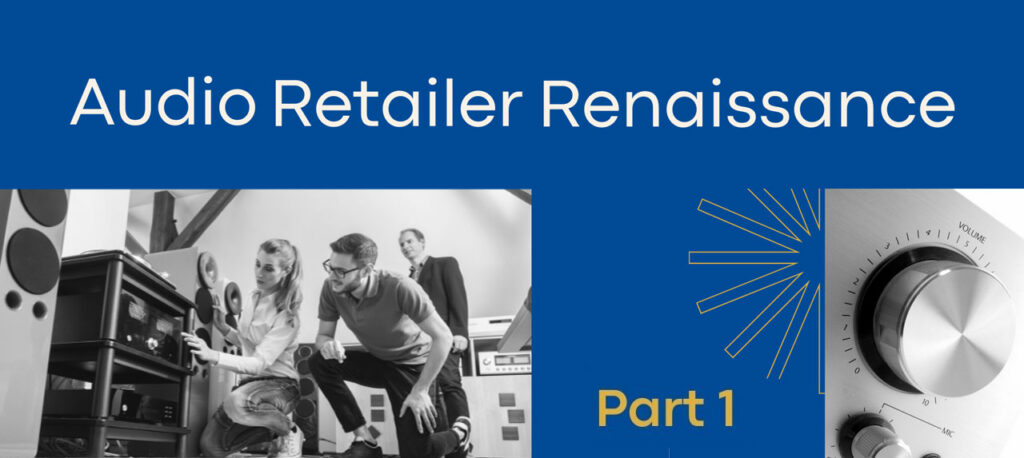
Audio Retailer Renaissance: Part 1
Ended soon
Barrels of ink have been spilled over the past 20-plus years regarding the decline of the specialty audio retailer. The visits to the local “hi-fi shack” that Boomers fondly remember – and that drove an entire industry for generations – are as far in the past as mixtapes and LP changers. But wait – mixtapes and vinyl are back in vogue, and so is hi-fi. Are there opportunities for new-school audio retailers with forward-thinking business models? Most certainly. Who will be the innovators to take up the challenge?
Let’s quickly review the gut punches that brought the audio retail business to its current state. By the way, we aren’t discussing the luxury audio retail business, which is a separate case altogether and doing rather well, thank you. There are many dozens of components today that ably sell for five and six figures, and wealthy customers have no complaints regarding choice. We’re talking about systems and components designed for the mainstream consumer market, from entry-level on up to flagship. While these products obviously still exist and still sell, many dealers and brands left the game and went home (willingly or not). Here’s why:
-
– Once it became possible to have an entire music collection in your pocket that went with you anywhere, portable listening became the dominant consumer mode. Suddenly every audio maker was in the headphone business or wished it was. Worse, a lot of opportunistic non-audio and white-label brands jumped in with cheap earbuds, fragmenting (some would say polluting) the market.
-
– With the mainstreaming of flat panel TVs in the 2000s, consumers felt compelled to buy surround sound audio systems to complete the “experience.” It’s markedly harder to design, demo, sell and configure a six speaker system vs. two, but manufacturers and dealers salivated over the obvious mathematical benefits. Consumers didn’t want to feel left behind, so they bought these systems, often to their eventual regret. We wish we had a dollar for every 5.1 system that never got calibrated (dB meter anyone?) and for every pair of surround speakers that ended up gathering dust in the garage.
-
– Several of our senior bluesalve Partners pioneered consumer electronics e-commerce and sold the very first HDTVs over the web back in 2000. We were both surprised and delighted that consumers would spend thousands of dollars for a huge rear-screen projector without seeing the product in person. They didn’t even need “showrooming” – which probably said more about the dominant retailers of the time than about the advantages of e-commerce. But today, even internet-first audio brands struggle with the pitiless pricing, fulfillment and return standards set by Amazon.
-
– With dwindling markets for equipment sales and shrinking margins thanks to the web, audio dealers had to change in order to remain viable. Many of them re-invented themselves as “hybrid” integrators. We’ll install your in-walls! We’ll wire up your home automation! Unfortunately, this put the retailers into a different business. Successful custom install is a matter of selling labor, not products. That’s another skill altogether, and one that rarely generates the same dealer passion.
-
– Now that mainstream consumers (especially young ones) have had 15 years of experience with smartphones, apps and ubiquitous Wi-Fi and Bluetooth, the task of getting music all throughout the house is no longer seen as a difficult job best left to a professional. Ditto for “home automation,” which has gone DIY in a big way. Sure, there are still plenty of installs left to do in the world. But as we said at the outset, we’re talking about mainstream, not luxury. There will always be a niche for Crestron and all that goes with it.
The list above is by no means comprehensive. The good news is that we’re at the outset of a revolution in audio, for home and on the go. Things in the industry have changed mightily, including the customer base. Change is inevitable in our industry, and the ability to navigate change is essential; not only for survival, but for growth.
We believe there are enough pieces already in place for there to be a corresponding revolution in audio retailing. It might look very different from the hi-fi shacks of old, but there are already business models in other industries that could be profitably applied. We look forward to talking more about them in Part 2 of this series – stay tuned!
